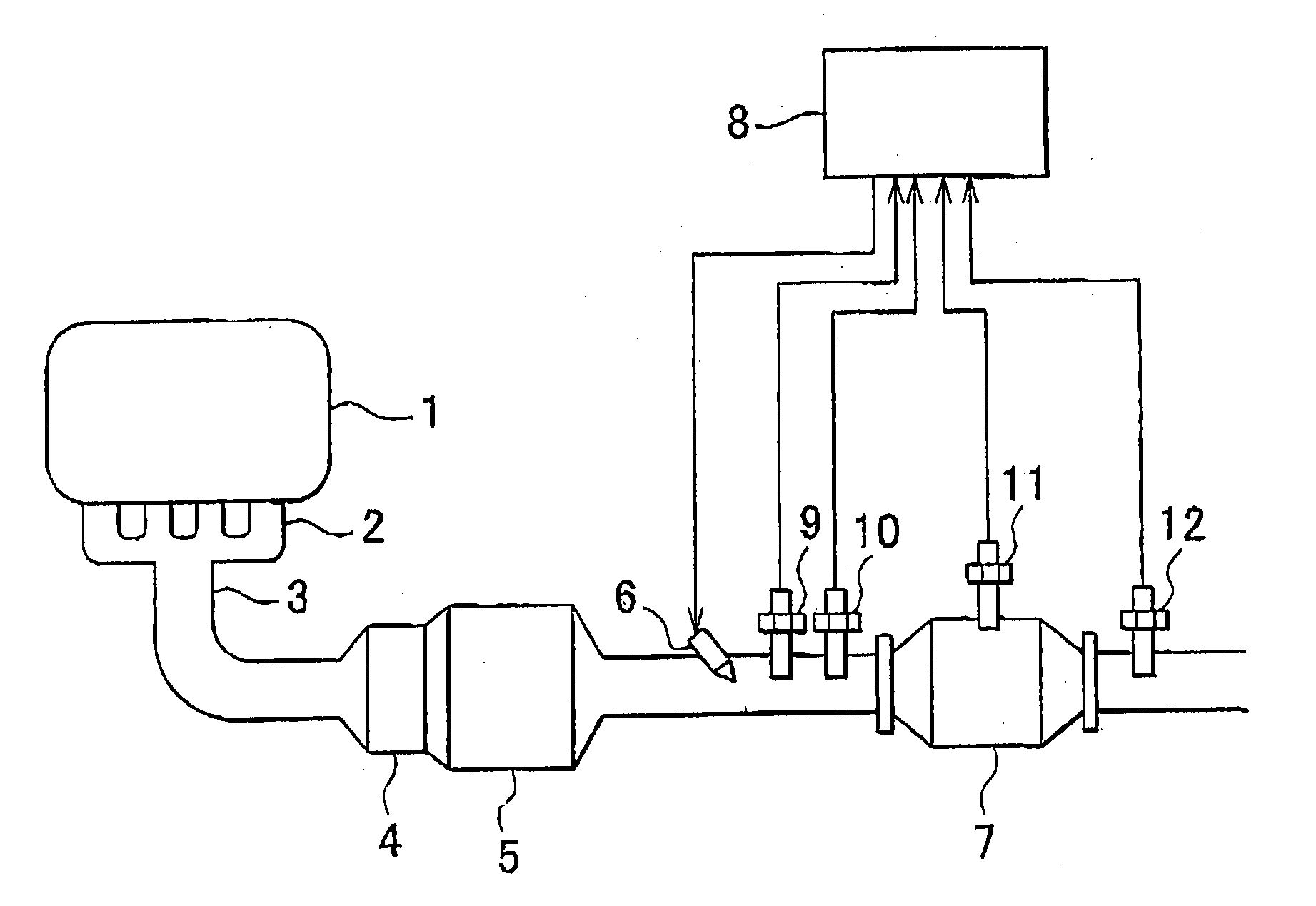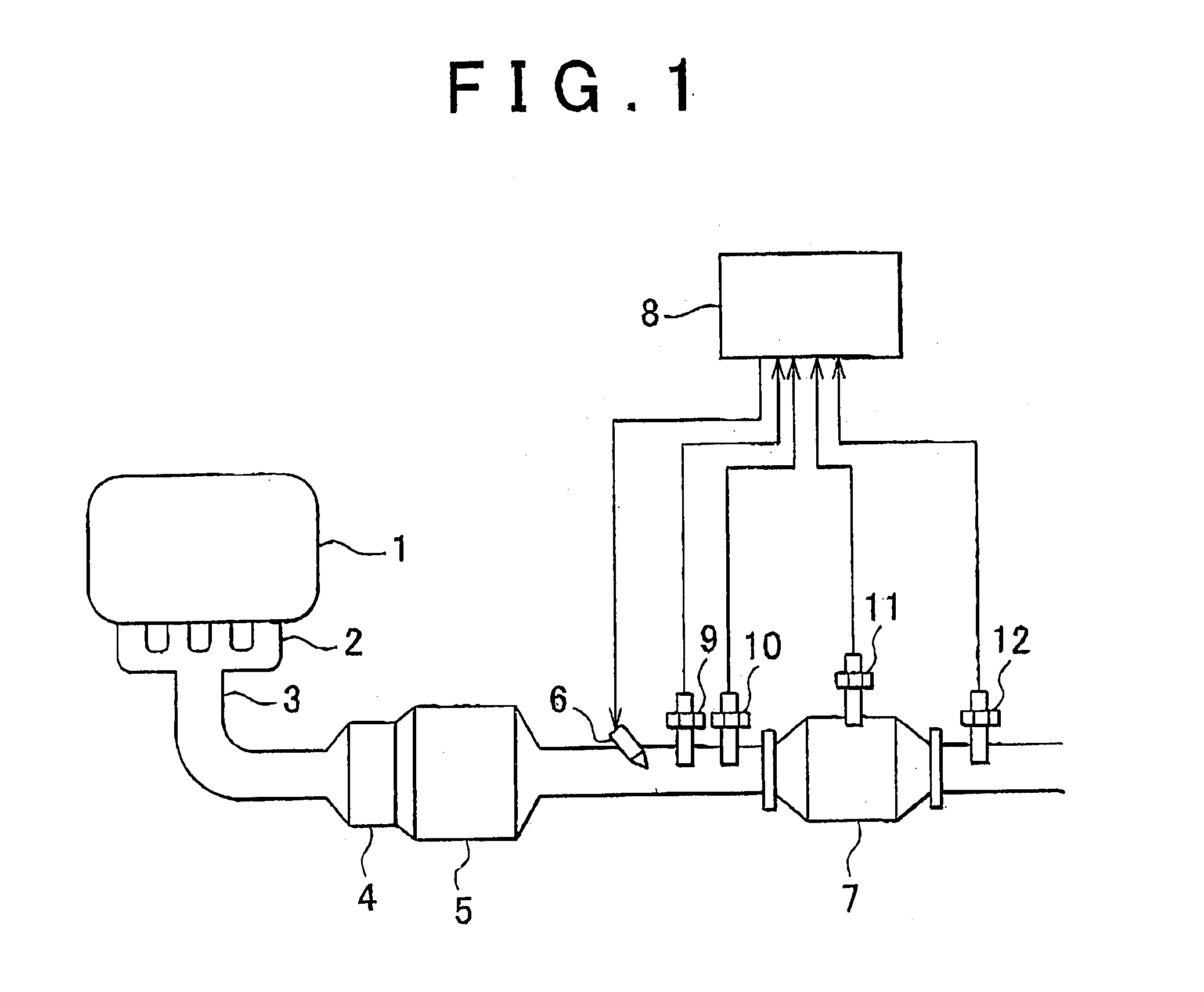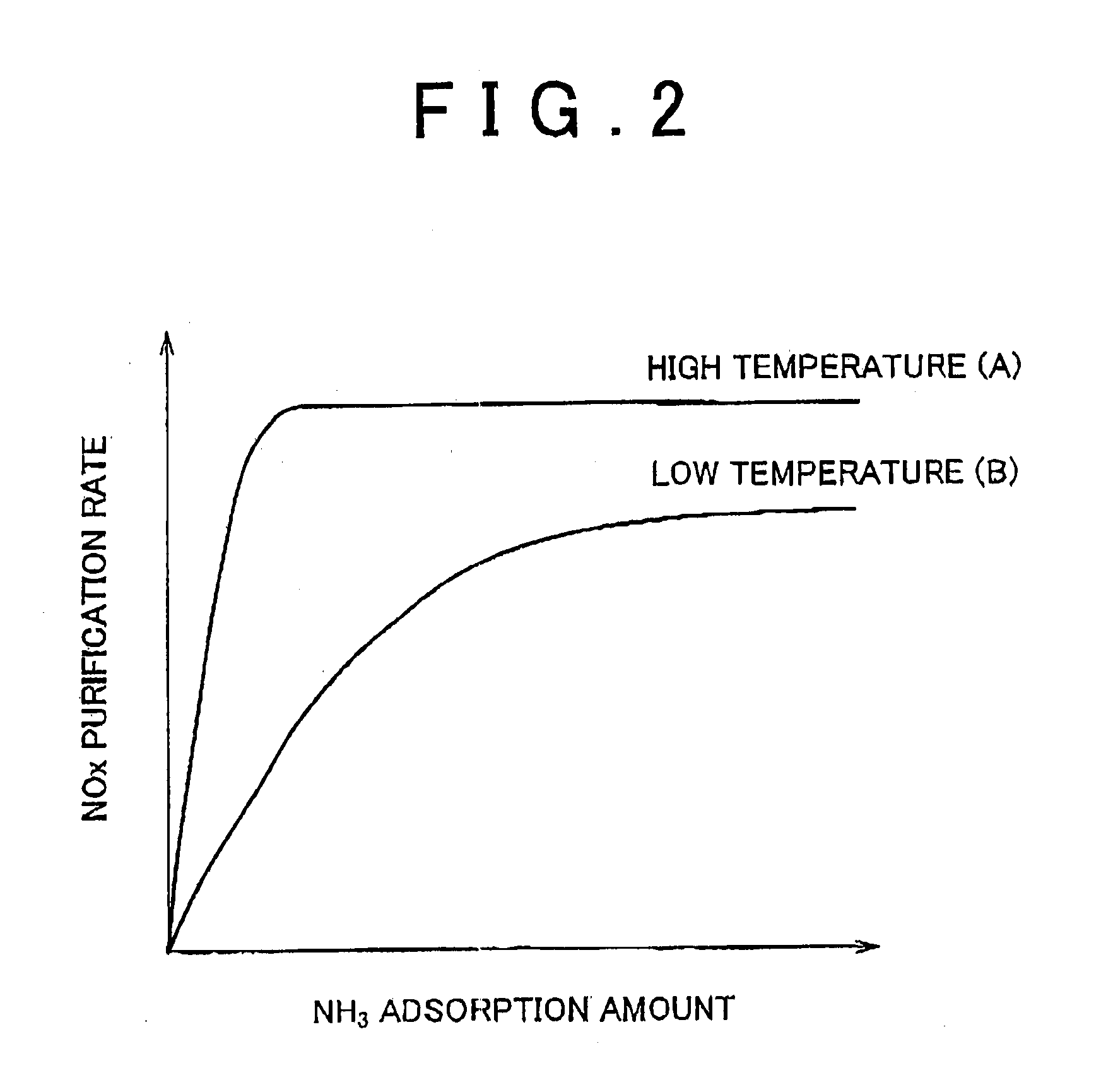Exhaust gas control apparatus and control method for exhaust gas control apparatus
a control apparatus and control method technology, applied in mechanical apparatus, engine components, machines/engines, etc., can solve the problems of ammonia slippage, ammonia purification rate, and ammonia slipping, so as to improve the purification rate of exhaust gas and the effect of improving the purification ra
- Summary
- Abstract
- Description
- Claims
- Application Information
AI Technical Summary
Benefits of technology
Problems solved by technology
Method used
Image
Examples
first embodiment
[0132]First, an example of urea addition control according to the invention, in which the ammonia adsorption amount in a predetermined region of the NOx reduction catalyst 7 is determined from the ammonia adsorption amount distribution through the NOx reduction catalyst 7 and the urea addition control is performed on the basis thereof, will be described.
[0133]In the first embodiment, as shown in FIG. 4, the ammonia adsorption amount distribution through the NOx reduction catalyst 7 is obtained using a model in which the NOx reduction catalyst 7 is divided into two cells. Hereafter, an upstream side part 71 in the exhaust gas flow direction will be referred to as a first cell, and a downstream side part 72 in the exhaust gas flow direction will be referred to as a second cell. In the first embodiment, urea addition control is performed on the basis of the ammonia adsorption amount in the second cell 72.
[0134]When ammonia adsorbed to the first cell 71 desorbs from the NOx reduction ca...
second embodiment
[0166]Next, an example of urea addition control according to the invention, in which a likelihood of ammonia slip is determined from the ammonia adsorption amount distribution through the NOx reduction catalyst 7 and the urea addition control is performed on the basis thereof, will be described.
[0167]FIGS. 7A and 7B are views illustrating a method of determining the likelihood of ammonia slip. FIG. 7A is a view showing the ammonia adsorption amount distribution through the NOx reduction catalyst 7. The abscissa in FIG. 7A shows an exhaust gas flow direction position (coordinate) within the NOx reduction catalyst 7, and the ordinate shows the ammonia adsorption amount. In FIG. 7A, a curve a (x) represents the ammonia adsorption amount distribution through the NOx reduction catalyst 7.
[0168]The adsorption amount distribution a (x) shown in FIG. 7A is an example of a distribution in which the ammonia adsorption amount in the vicinity of an inlet into the NOx reduction catalyst 7 is lar...
third embodiment
[0198]Hence, in the third embodiment, when a rapid increase in the temperature of the NOx reduction catalyst 7 is predicted on the basis of variation in the temperature of the exhaust gas flowing into the NOx reduction catalyst 7 or variation in the operating conditions of the internal combustion engine 1, urea addition is stopped or reduced in advance, even though an actual temperature increase has not yet occurred in the NOx reduction catalyst 7.
[0199]In the third embodiment, when a transitory state during which the operating conditions of the internal combustion engine 1 vary from a low load to a high load is detected, and when an increase in the temperature of the exhaust gas flowing into the NOx reduction catalyst 7 is detected by the exhaust gas temperature sensor 9, the slip determination values 1, 2 are corrected in accordance with the amount of variation in the load and the increase in the temperature of the exhaust gas. The slip determination values 1, 2 are corrected to s...
PUM
 Login to View More
Login to View More Abstract
Description
Claims
Application Information
 Login to View More
Login to View More - R&D
- Intellectual Property
- Life Sciences
- Materials
- Tech Scout
- Unparalleled Data Quality
- Higher Quality Content
- 60% Fewer Hallucinations
Browse by: Latest US Patents, China's latest patents, Technical Efficacy Thesaurus, Application Domain, Technology Topic, Popular Technical Reports.
© 2025 PatSnap. All rights reserved.Legal|Privacy policy|Modern Slavery Act Transparency Statement|Sitemap|About US| Contact US: help@patsnap.com



